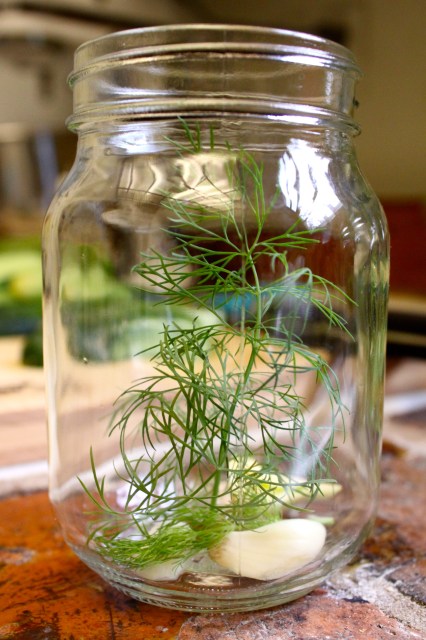You Can Eat Local During The Winter Too
Sadly, we moved away from New Orleans last fall, and we now live in Chicago. This presented a few problems for our local diet. Chicago, like most places in the U.S., has a very limited selection of produce in the winter. Farmers mainly sell the stuff that holds up in storage: winter squash, onions, apples, and root vegetables. Unfortunately, you can only eat so many beets without making a break for the grocery store. So this winter, about half our food has come from local sources, and the rest has come from a conventional grocery store.
It doesn’t have to be this way. If you eat locally through a whole growing season and you plan things out right, you can set yourself up to have a really great winter. In June and July, you can make jams or freeze whole berries for pie. In August, you can make jars of tomato sauce or stewed tomatoes. When animals start producing their best milk in the summer, you can make some hard cheese (yes, you can do that at home). When the hot peppers start rolling in, you can make a few bottles of hot sauce.
So our goal this year is to put in the effort during the summer, and end up with a pantry full of preserved local food for the winter. We have already spent some time learning different preservation methods, and we’re excited to employ them on a new season of produce. Chicago has several wonderful local foods stores, where we will be getting some of our food. The rest (hopefully most!) of our food will come our garden plot. Chicago is known as a hotbed of urban farming and community gardens, and we snagged one of the last open plots in the city. We can start planting things in mid-April, though we have already started a bunch of seeds indoors so we are ready when spring really starts. So far, we are planning to grow cucumbers, tomatoes, lima beans, sweet peppers, hot peppers, broccoli, chives, onion, lettuce, arugula, radishes, carrots, potatoes, and some berries. With a little luck, a lot of our projects this summer will feature food from our own garden!

Preserved, my new column, will document our journey. Each month, I will highlight some fun ways to use and preserve some locally grown food that is in season for me, and probably for most of the U.S. I will cover the basics of preserving food by fermenting, pickling, canning, and freezing. Some of the recipes will be for immediate consumption, some can sit around until December. By the end of the year, you should have all the tools you need to make the most out of your local produce and to stock your pantry full of delicious DIY preserves.
Let’s start with a simple recipe for dill pickles.
How To Make Refrigerator Dill Pickles
The last time I was at my local food co-op, they had several baskets of beautiful pickling cucumbers. I couldn’t resist buying a bag full to make some dill pickles. This recipe is incredibly simple, but the results are impressive. In just a few days, you will have perfect dill pickles. And they look so beautiful floating in a jar with dill and garlic that they make great gifts!
For this recipe, the most important component is obviously the cucumber. Make sure you get a pickling cucumber, the ones that are shorter, curved and bumpy. They have a thin skin, so the brine soaks in more easily, and they tend to retain their crunch much better than salad cucumbers.

To make about 3 pint-size jars of pickles, all you need is:
+ six to eight cucumbers, depending on the size (shorter is better so they fit more easily into the jar)
+ six cloves of garlic
+ fresh dill
+ 1/2 cup of distilled white vinegar
+ 3 tablespoons of kosher salt
+ 3 cups of water
First, cut the cucumbers into spears. You can leave them whole if you want, but I prefer the classic look of spears. Next, cut all six cloves of garlic in half. Place four garlic halves and several sprigs of dill into each jar.

Put about eight cucumber spears in each jar (depending on the size of the cucumbers). The jar should be fairly full, but don’t pack them in like sardines. Prepare the brine mixture of vinegar, water, and kosher salt. Stir to dissolve the salt. Fill each jar to the top, so that all the pickle spears are submerged. It’s easier to arrange the dill decoratively at this point, so if you plan to give the pickles as gifts, you can wait until the end to put the dill in the jar.
Seal the lid tightly, and put in the fridge. In a few days, you will have pickles! For your next attempt, try adjusting the amount of garlic and dill to get a different flavor.








